
"Acoustic space" as a McLuhan percept originally emerged from the description of "auditory space" in the behavioural psychology of E.A. Bott of the University of Toronto, which was brought to McLuhan's attention by a colleague in the Ford Foundation Culture and Communication seminars, psychologist Karl Williams. Bott's idea, that auditory space "has no centre or no margins since we hear from all directions simultaneously," immediately attracted McLuhan, who had already been immersed in then-contemporary writers concerned with space, including art and architecture historian Sigfried Giedion, visual artist and designer Laszlo Mohly-Nagy and classicist Francis Cornford, author of "The Invention of Space." With Ted Carpenter, co-founder of the seminars and of the early multidisciplinary journal Explorations, McLuhan gradually expanded the idea of auditory space, christening it "acoustic space" to dramatize its abstract nature. Carpenter contributed Aboriginal, especially Inuit, conceptions of an acoustic space; McLuhan worked out its relation to the contemporary arts and poetry affected by four-dimensional geometry and the new physics.
At considerable length and with copious documentation, Cavell illustrates the importance of this perception to McLuhan's work and demonstrates how it made him attractive to contemporary artists in Canada, the United States and Great Britain who were working in the wake of the modernist radical avant-garde: Duchamp, Picasso, Klee, Leger and P. Wyndham Lewis. McLuhan was also attractive to Dadaists, futurists, cubists, constructivists, abstract expressionists and surrealists. For the first time, readers can see the extent of McLuhan's effect on the visual and conceptual art of Iain and Ingrid Baxter, the music of R. Murray Schafer and the concrete poetry of bp Nichol. McLuhan also influenced Quebecois intermedia artist Jacques Languirand. Readers will see part of the significant role McLuhan's work played in the artistic endeavours of John Cage, Merce Cunningham, Dick Higgins and the Fluxus group and Gerd Stern. With Cage and Cunningham particularly, McLuhan shared a special interest in and dedication to James Joyce.







"McLuhan's Canadian Sense of Space, Time and Tactility"
Richard Cavell, McLuhan in Space: A Cultural Geography (Toronto: University of Toronto Press, 2002).
A review by Don Theall
Marshall McLuhan's work has not been the subject of many genuinely scholarly books, nor has he, with few exceptions, been regarded as an artist or as a significant figure in the pantheon of Canadian culture. Consequently, Richard Cavell's recently published McLuhan in Space: A Cultural Geography is a significant addition to the literature about McLuhan. In this profusely documented study of McLuhan as a "space theorist," Cavell seeks for an all-encompassing formula to explicate the phenomenon of a quintessentially Canadian McLuhan, who had a substantial impact throughout the world in the 1960s and then again in the 1990s. Cavell locates the vision that creates such an impact in McLuhan's discovery of the idea of "acoustic space" (a "percept," according to McLuhan). "Acoustic space" has become one of those phrases like "global village," "the medium is the message" and the "Gutenberg Galaxy," which are synonymous with his name. The peculiar attractiveness of this percept is that it is simultaneously abstract and yet material, describing "unenclosed space" and hence permitting discussions about measure, movement through "space-time" and speed.
"Acoustic space" as a McLuhan percept originally emerged from the description of "auditory space" in the behavioural psychology of E.A. Bott of the University of Toronto, which was brought to McLuhan's attention by a colleague in the Ford Foundation Culture and Communication seminars, psychologist Karl Williams. Bott's idea, that auditory space "has no centre or no margins since we hear from all directions simultaneously," immediately attracted McLuhan, who had already been immersed in then-contemporary writers concerned with space, including art and architecture historian Sigfried Giedion, visual artist and designer Laszlo Mohly-Nagy and classicist Francis Cornford, author of "The Invention of Space." With Ted Carpenter, co-founder of the seminars and of the early multidisciplinary journal Explorations, McLuhan gradually expanded the idea of auditory space, christening it "acoustic space" to dramatize its abstract nature. Carpenter contributed Aboriginal, especially Inuit, conceptions of an acoustic space; McLuhan worked out its relation to the contemporary arts and poetry affected by four-dimensional geometry and the new physics.
At considerable length and with copious documentation, Cavell illustrates the importance of this perception to McLuhan's work and demonstrates how it made him attractive to contemporary artists in Canada, the United States and Great Britain who were working in the wake of the modernist radical avant-garde: Duchamp, Picasso, Klee, Leger and P. Wyndham Lewis. McLuhan was also attractive to Dadaists, futurists, cubists, constructivists, abstract expressionists and surrealists. For the first time, readers can see the extent of McLuhan's effect on the visual and conceptual art of Iain and Ingrid Baxter, the music of R. Murray Schafer and the concrete poetry of bp Nichol. McLuhan also influenced Quebecois intermedia artist Jacques Languirand. Readers will see part of the significant role McLuhan's work played in the artistic endeavours of John Cage, Merce Cunningham, Dick Higgins and the Fluxus group and Gerd Stern. With Cage and Cunningham particularly, McLuhan shared a special interest in and dedication to James Joyce. The most remarkable aspect, and the one most fully developed by Cavell, is McLuhan's influence on his Canadian compatriots.
The third thrust of the argument in McLuhan in Space is the importance of McLuhan's Canadianism. He remained dedicated to Canada in his understanding and vision of the new globalized world of media. A number of Canadians influenced McLuhan: E.A. Bott, Carleton Williams, Richard Maurice Bucke, Reginald Fessenden, John Murray Gibbon, Bertram Booker and R.E. Wilson. Bucke is particularly interesting since he coined the phrase "cosmic consciousness," an idea that has strong affinities with the more abstract aspects of acoustic space and which therefore played into McLuhan's later fascination with the literature of cosmic consciousness as well as his near-mystical vision of acoustic space. Cavell avoids any significant reference to the depth and complexity of McLuhan's classical and medieval framework and never confronts the full pedigree of acoustic space, a pedigree that moves from the Pythagoreans through Alanus de Insulis to Pascal. In the twelfth century, Alanus defined God as "an intelligible sphere, whose centre is everywhere, the circumference is nowhere." This became Pascal's definition of nature: "an infinite sphere, the centre of which is everywhere, the circumference nowhere."
McLuhan viewed Canada - and himself, for that matter - as an "early warning system," a sort of cultural DEW line that would alert Americans to the dangers and complexities of the new electric and post-electric media world. This influenced his sense of space. He lived in a land where there is a great consciousness of space, and he was influenced by that land. Ted Carpenter's work on the Inuit, as expounded in Explorations 9: Eskimo, affected McLuhan's understanding of space. Cavell treats this influence as secondary to the significance of Canadian intellectual P. Wyndham Lewis, the painter, essayist and satirist, and to the even greater presumed significance of Canadian academic Harold Innis. Lewis is mentioned from time to time throughout the book, but he is not given as central a role in McLuhan's percept of space as he deserves, although his influence predated that of Innis by many years. (Lewis was known to McLuhan in the 1940s.)
Cavell handles the role of Innis in McLuhan's thought perceptively. McLuhan felt Innis suffered from a lack of knowledge of the arts and of poetry, and Cavell clearly shows that McLuhan does not share Innis's "plea for time." Instead, bureaucratic structures became the "principal means of social continuity" through the "result of a mastery of space." Cavell criticizes Jim Carey's thesis that Innis was the more sophisticated and important Canadian communication theorist. McLuhan rejected Innis's "plea for time" and its association with orality; he countered Innis's problems with space and developed his unique spatial theory, where the haptic and tactile are fundamental.
It is likely that whatever limited effect Innis had on McLuhan was a result of his large-scale vision of an unfolding history of media, which provided McLuhan with a way to convert his studies in the history of the trivium into a history of media in The Gutenberg Galaxy. For McLuhan, the important essays in The Bias were "Minerva's Owl" and "The Bias of Communication" (he read both before they appeared in The Bias). His major interest would have been in the earlier Empire and Communications. Yet Cavell, who stresses the influence of the arts, especially figures such as Lewis and Moholy-Nagy, on the early McLuhan, argues that Innis's "The Problem of Space" occupied a special place in making McLuhan a space theorist. Giedion, Moholy-Nagy, Cornford, Lewis and James Joyce - through whose work, Cavell observes, McLuhan likely learned that Helmholtz coined the phrase "auditory space" - were important for McLuhan before he could have read Innis's essays in The Bias of Communication. Cavell demonstrates that, in key essays, McLuhan hedged about the real significance of Innis and his work; this position is confirmed by my observations and those of Ted Carpenter. We worked closely with McLuhan during the supposed period of influence. Carpenter's studies of the role of "spacetime" in Inuit culture had an earlier and immediate influence on McLuhan's ideas about perception and space.
McLuhan's interest was in perception, in the activity of the entire sensory system and the experiencing of "spacetime" rather than in the articulation of some grand theory of space. What McLuhan really gained from Innis was the reassurance that he could convert the historical perspective he had developed in his doctoral thesis on Nashe into a way of describing the historical development of media, and thus to root his analysis of media in the classical affiliation of art as a techne with technology. McLuhan provided the crucial artistic and humanistic perspective to Innis's more technologically contained project of communication history.
Cavell establishes that McLuhan's interest in space and spatial percepts predates his encounters with Innis. It came from the Dadaists, the futurists and P. Wyndham Lewis. It is unfortunate that Cavell does not feature Lewis more prominently, particularly in view of Lewis's Canadian connections and his effect on McLuhan's later collaboration and friendship with Wilfrid and Shelia Watson. (Shelia Watson wrote a doctoral thesis with McLuhan on Lewis, and worked for a while as Lewis's biographer.) Cavell establishes the importance of Canada and of the modernist arts of the first half of the twentieth century on McLuhan's work, but he feels it necessary to make McLuhan a "space theorist." McLuhan constantly and strongly denied that he was a theorist; he repeatedly stressed that he did not deal with concepts but rather with percepts. Cavell is right to establish McLuhan as a poet-essayist and a creator.
In McLuhan in Space, the portrait of McLuhan as a colleague of artists unfolds as an important corrective to the association of McLuhan with the PR boys and the rich and the famous; it is also a useful dissociation of his work from the accepted theory and methodology of the academic community of communication studies. In Cavell's argument it becomes abundantly clear that McLuhan was as important a figure for Canadian artists and creators as he was for Cage, Cunningham or Dick Higgins in the United States, the situationists in France and the Independent Group in Great Britain. Cavell reiterates that McLuhan remained dedicated to his Canadian heritage throughout his entire life. As Cavell points out, McLuhan influenced artists, poets and other cultural producers because he was primarily a Canadian prose poet. Speaking about the fact that no Canadian poets followed Ezra Pound, Louis Dudek noted, "unless Marshall McLuhan was that poet."
McLuhan's sensitivity to the issue of "spacetime," as Cavell reveals, is closely linked to his encounter with artists and historians of art and architecture of the first half of the century - Duchamp, Klee, LeCorbusier and Picasso, among others. For McLuhan, even time is spatial, since it is a matter of movement through intervals. This idea is present as one of Moholy-Nagy's central arguments in Vision in Motion (1946). Moholy-Nagy derived his argument from the practices of the radical avant-garde; Giedion derived his analysis of the modes of space from a study of post-electromechanical architecture in the nineteenth and twentieth centuries. Giedion's analysis was an initiatory insight for McLuhan into the complexities of all modes of artistic construction. McLuhan in Space clearly establishes the significance of the explorations of the early-twentieth century arts into new conceptions of space and the accompanying relevance of the new mathematics and physics. The argument moves further to embrace the significance of tactility for McLuhan - acoustic space becomes tactile space, and since tactile space is interior to the body as well as exterior to it, the significant relation of modes of perception to acoustic space is made apparent. Pascal provides a basic account of acoustic space in his description of nature; he also intuits the importance of the artist-philosopher, along with the poets, in being concerned with la peinture de la pensee. Like the key poets of modernism from Baudelaire, Mallarme and Apollinaire to Eliot and Joyce, McLuhan sees himself constructing assemblages of the interior landscape.
Cavell is particularly valuable in contributing many major examples of the influence of the visual arts on the evolution of this interior space. He explains how Duchamp, P. Wyndham Lewis, Picasso and Leger contributed to McLuhan's understanding of the problems of the interiorization of space. The only reservation I have with his exposition is his insistence on the primacy of space in McLuhan's vision. Space is central, and there is a considerable debt owed to Cavell for demonstrating this; but perception and tactility as the links between the exterior and interior - the senses and the central nervous system - are even more central to McLuhan's analysis. It is perhaps partly because Cavell's exposition avoids McLuhan's classical, medieval and scholastic interests that Cavell treats McLuhan's interest in the sensus communis not as a gathering and sorting of sensory information in an interior sensory activity, but as associated with the Kantian notion of a common, public sense.
A greater recognition of the role of medieval humanism, scholasticism, Gothic architecture and Catholicism in McLuhan's thought would have opened up another avenue of uniquely Canadian direction in McLuhan. His ability to locate himself within an institution at the University of Toronto that had a Pontifical Institute of Medieval Studies could only have been possible within the Canadian context. The university sheltered the presence of a theological dialogue in which Marshall McLuhan and Northrop Frye would both be advocates. Cavell explores in extensive and interesting ways the McLuhan-Frye relationship and its relation to the Canadian art community and the Canadian academic community. Cavell demonstrates that Frye, while critical of McLuhan, respected him and his work - a respect that seems to have grown over time as Frye's remarks on McLuhan in Literary History of Canada indicate. This will certainly act as a corrective to the popular literary attitude that Frye despised or detested McLuhan.
Following two earlier Canadian analysts of McLuhan, Glen Wilmott and Judith Stamps, Cavell chooses to associate McLuhan's project with the rise of post-modernism, which certainly cannot be chronologically challenged. Nor can it be denied that, even though McLuhan's work was attacked and sharply rejected during an address in Montreal by one of the leading Parisian post-modernists, Jacques Derrida, his work still has affinities with some post-modern themes. French theorists such as Baudrillard and Virilio have promoted his work, although Cavell does not mention Virilio, Delueze or Guattari, who have some positive observations; he only occasionally mentions Baudrillard. Cavell associates McLuhan with modernist arts and artists, some of whom, as radical modernists, can be vaguely associated with post-modernism. But he gives no attention to the main line of modernist poetry, which is central to McLuhan. In McLuhan's writings, citations to Joyce, Lewis, Eliot and Giambattista Vico abound, from his early writings and The Gutenberg Galaxy to the posthumous Laws of Media and The Global Village.
With the exception of his last posthumous work, references to Joyce, Eliot and Lewis are far more frequent than references to Innis. Francis Bacon is also cited much more frequently than Innis in both the posthumous Laws of Media and in the early Gutenberg Galaxy, and Vico is one of the most cited authors in Laws (Theall, The Virtual 41-42). Yet Cavell does not discuss Bacon or Vico. There are two weaknesses in McLuhan in Space: first, its relative lack of encounter with McLuhan's extensive use of humanist literature; and second, considering the importance of modernist poets and essayists to McLuhan, an apparently unnecessary avoidance of discussing the extent and importance of their role in the works. Here, as elsewhere, McLuhan is a paradox. He has many elements of the post-modern vision, as Cavell notes, but he joins these to a quest for a "new humanism" grounded in an updating of the early Renaissance, and he sees his project as an extension of modernism - both the conservative modernism of Lewis, Eliot and Pound, and the radical modernism of Joyce and the early schools of avant-garde artists. In the latter interest McLuhan is closely related to Canadian man of letters Hugh Kenner.
Cavell appears to respect the paradox in McLuhan's work. He emphasizes the paradoxical nature of acoustic space and stresses the importance of chiasmus, with its relation to pun, throughout McLuhan's work, but he does not embrace the importance of McLuhan's classical and medieval interests. Nor does he discuss McLuhan's interest in what T.S. Eliot and Ezra Pound regarded as "the tradition." Perhaps this paradox, and Cavell's treatment of the modern and post-modern seems to intuit it, led McLuhan to participate in an alternative movement beyond the modern - what Michael Phillipson, a British artist and sociologist, has described as the pre-post-modernism of Joyce and others who ride the waves "in modernity's wake." The alternative movement seems to be the continuation of the satiric tradition of early radical modernism - including Joyce - into the world after hermeneutics, post-structuralism and post-modernism. Cavell follows the generally accepted trend of post-modernism but tends to prefer the term "parody" to "satire." Yet McLuhan embraced the concept of Menippean satire as early as The Gutenberg Galaxy, where he identified it in Pope, Swift and Joyce. McLuhan's position has a legitimate following in the post-modernist period. He and some of his Canadian, American and European successors suggest that there is a need for a concept such as "paramodern," meaning "beside and beyond as well as above the modern," in contrast to "post-modern."
McLuhan in Space clearly points out McLuhan's affinity with Mikhail Bakhtin by stressing the importance of the dialogical and seeing its affiliation with the pun and with wit, and by emphasizing the notion of "living dialogue." Cavell departs significantly from Innis's uninflected "orality." Such an insight, which Cavell pursues elsewhere in his argument, is essential to dissociating McLuhan from Ong, and from Innis's sharp dichotomy of orality and literacy. Perhaps it is a contemporary discomfort with satiric critique that keeps Cavell from approaching the extent of McLuhan's satiric, poetic vision, which has been stressed by Eric McLuhan's work on Joyce and satire. Yet McLuhan in Space celebrates McLuhan the pun man and recognizes his dialogic technique. As Cavell notes, bp Nichol said Joyce encoded puns; McLuhan decoded them. Nichol's distinction may be facile, yet it underlines the importance of the pun and paradox in McLuhan, as well as the affiliation with Duchamp and the roots of radical modernism. Cavell seems uncomfortable with Joyce's extreme intellectuality, yet McLuhan in Space proves that Marshall McLuhan was an intellectual.
A number of minor points: Cavell tends to ignore the importance of McLuhan's early collaborators, suggesting collaboration begins in the late 1960s. On the opening page of McLuhan in Space he fails to make clear that the original reference in Verbi-Voco-Visual to Mondrian's Broadway Boogie-Woogie comes from an article by Victor Papanek, McLuhan's collaborator. McLuhan always worked in collaboration, beginning with Hugh Kenner, Ted Carpenter and other participants in his early seminars. One of his strengths was to build a vision on collaboration. While analyzing McLuhan's early article "Poetic vs. Rhetorical Exegesis," Cavell suggests McLuhan is developing a "rhetoric of space." He omits to note that McLuhan considered himself a traditional grammarian who used the resources of the trivium. This is a crucial aspect of McLuhan's commitment to the poetic and the hermeneutic. McLuhan was attached to the classical world, as interpreted in the late Middle Ages and the early Renaissance. Cavell wants to separate McLuhan from Frye on an understanding of scholia, but McLuhan, like Frye, always associated the idea of leisure with learning, research and teaching. Even though McLuhan came, in the last decade and a half of his life, to lead a more hectic and less leisurely life, he founded his lifelong project on the idea of scholia, which is what made him such a powerful interpreter and critic of the current age. Finally, note 76 on page 24 is erroneous and the text it annotates is misleading.
McLuhan in Space ushers in a new era of studies of McLuhan. These studies will explore his relation to and effect on Canada and will situate him within the creative community of artists and poets with whom he identified. Extricating McLuhan from mythology and McLuhanism will be a complex, yet important activity, since his very persistence over 40 years as a major figure, most recently for the digital generation, makes it essential to attempt to understand him and the sources of his vision. In this effort Richard Cavell's work has an important role. Cavell has clearly identified McLuhan with currents others have avoided - most particularly poetry, the arts and the newer lively arts. In the process he has respected McLuhan's view of his work as uniquely Canadian. If in my review I have at times been somewhat critical of the weaknesses of this study, it is primarily a sign of respect for the importance of this work. McLuhan in Space is one of the essential and important studies on McLuhan.
Works Cited
Carpenter, Edmund S. Eskimo: Explorations 9. Toronto: University of Toronto Press, 1959.
Cornford, Francis. "The Invention of Space. " Essays in Honour of Gilbert Murray. London: George Allen and Unwin, 1936. 215-35.
Innis, Harold A. Empire and Communications. Rev. ed. Toronto: University of Toronto Press, 1950.
_____. The Bias of Communcation. Toronto: University of Toronto Press, 1951. Joyce, James. Finnegans Wake. New York: Viking, 1945.
McLuhan, Marshall. The Gutenberg Galaxy. Toronto: University of Toronto Press, 1962.
_____. The Place of Thomas Nash in the Learning of His Time. Diss. Cambridge University, 1943.
McLuhan, Marshall, and Bruce R. Powers. The Global Village. NY: Oxford University Press, 1989.
McLuhan, Marshall, and Eric McLuhan. Laws of Media. Toronto: University of Toronto Press, 1988.
McLuhan, Marshall, et al. Verbi-Vocal-Visual Explorations. NY: Something Else Press, 1967.
Phillipson, Michael. In Modernity's Wake: The Ameurunculus Letters. NY: Routledge, 1989.
Theall, Donald. The Medium is the Rear View Minor: Understanding McLuhan. Montreal: McGill-Queen's University Press, 1971.
_____. The Virtual Marshall McLuhan. Montreal: McGill-Queen's University Press, 2001.













![et cetera : LOVE [1977]](https://blogger.googleusercontent.com/img/b/R29vZ2xl/AVvXsEgQ8s7vwLQuzHDNgqlfBacxRkEbOErToak9kmgFl0VmyIYEqS9qIzNIVcXKpzTncPhqo3TSgOyztAguIW6OlXw65aFHmpx6cRzmvCUQQMTwUGUOd0iE0GbJakEc3g3kBAJrvlZP4z3eesg/s1600/etc1977.jpg)









![MAC LUHAN [sic] : LOST IN TRANSLATION](https://blogger.googleusercontent.com/img/b/R29vZ2xl/AVvXsEg92tMqBMDA917NDivsS2ZwIirx9KTf24tOCgFFnK65p7Hw5dvqEh1e2aefCynj2UW8u-k8zwBXbjgypsCXUcv-5G7ZCsyDB13giHEjmhVISAeW-oI_JV6ePOXW_XBDPwy2nREAoqRU7Z8/s1600/MAC.jpg)






















![Les Yeux De Nadja [unpublished]](https://blogger.googleusercontent.com/img/b/R29vZ2xl/AVvXsEgrXohpIuxxYyjKoqBSQf3TpYGjnttZnjRFvmMdshadfnVKi7PMAjIqEuqYctZFXOFH2n-oH75oJx-YkaON7xvaZgVdvaK0zfSOurEmCKqmWF6qXh2F3VbqyixfGhvY4qH6LENMTs1wCIw/s1600/2xsurreal.jpg)
















![PIED PIPERS [MARSH] ALL](https://blogger.googleusercontent.com/img/b/R29vZ2xl/AVvXsEhqvGIGG9lWZYhFZRVc_V8EJG2apQBsys4kNQOQsA0EV6H6Tg-SMN0sX15NXy_GzsF3xAUdcb2QlfvJk-RU-Rha-3Eu5Mnglkf5KLe6pccVqAP4VR_Gi4fGQ716QSmDe3Zna5Uwct5d2sw/s1600/piedPiperMarshALL270.png)






























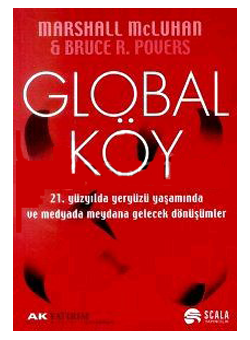




























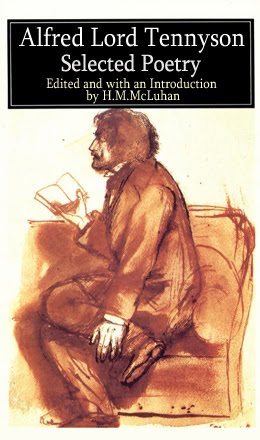






![PICNIC IN SPACE : The Great Minds of Our Time Film Series [1973]](https://blogger.googleusercontent.com/img/b/R29vZ2xl/AVvXsEjyov75DRIUBWcYLkzPYmupFy8CQ9dQ4Q798zDIN6jPNsSdBB_WuOcvPl4WjMAz10csG071oCO3BCUtIcKyHoIkCN0lCy0OxGCV_HrLXrGNKRpUiKMrqzkJh4LSc7jT_KrrqmClapSlVa8/s1600-r/PicnicInSpace.jpg)


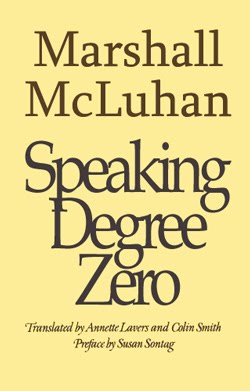






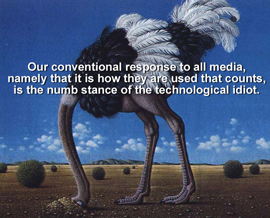


















![more Hidden ground [re:Bride] : the "flippancy" of tone seemed just "right"](https://blogger.googleusercontent.com/img/b/R29vZ2xl/AVvXsEg-hQyF9KGGhKYc73nUGmV1bStJ4fTJVh0-TL1ZtikLZEv5ppjhB3DOhFcVuzGq-kByrwtTAWgCcE173pA3UTIPe7h6xJjsPt7lRvNym007ZsdXenMDLNimKcwtaTOqkGleoxmXOeCKtxXL/s1600-r/LEAVISLEWIS.png)
















![BABA WAWA [TODAY SHOW, Toronto City Hall 1970]](https://blogger.googleusercontent.com/img/b/R29vZ2xl/AVvXsEjTZAIFkA07K36WGk951vmZnLPU99fOdNzlvVhyphenhyphenhKZEKu2n2AW5EA1CDZGaTk0aYRXUv7IOXG39igaikoE6SWm8j7QIG96wYRE54oBXwvlaNCJzp15vdkrcqR97IMMny-8sHjM-VDotTOaY/s1600-r/babaWawa.jpg)

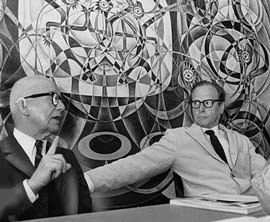

![enter the dragon : "typhon in america" [unpublished]](https://blogger.googleusercontent.com/img/b/R29vZ2xl/AVvXsEjdCnZdJ6JbaLc6hyUmUJo5UJ0m8WZSj_afYU9oRlHKIUgAIfcy2EPHNAptSRYEAmpOf0Xaa0B8iMgOTF302lY0Xmbyne0hvrdRyNo-t0Q-PPdzqX39uI3T5x5FppRPaQf9sSaXytrOpWVN/s1600-r/TIA.jpg)




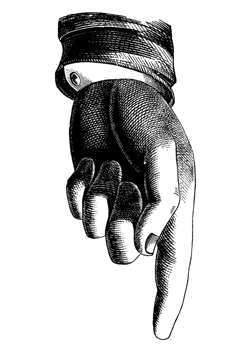






















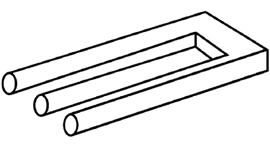









![Take Today [1972] : "the consumer becomes a producer..."](https://blogger.googleusercontent.com/img/b/R29vZ2xl/AVvXsEhA53bdVdTaXdQo1fDmrsI8oiAwF-3jampcanOq8uk3QMh8_ImkNsTiKd4-RnZY8Vbwqh1fymJiyCl1CSLcSonXHQM6XbnJYQi_Vu89gbAV4jVq73EtlbM3w6CthyphenhyphenV_pHEjE6eu_VhC489u/s1600-r/PROSUMER.jpg)








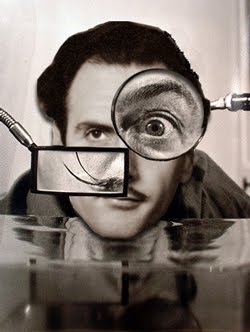















































































![" Outtragedy of poetscalds!, Acomedy of letters " [ FW 425.24]](https://blogger.googleusercontent.com/img/b/R29vZ2xl/AVvXsEhJMrJLN3oPUb25A2tjQtWZcZxA4wZB0IOvaIAvxosAUqlFc258HHvzvlnHHvKhKq7hG3epo76izY2Bu0HC3Cy-8S46Rf0Wni3L8j8jEfpT7sXK3UFlXBMtN2v2JdrmdxvWk8VWKjkhN4-9/s1600-r/preplexLP.png)











![mars[HAL]9000 : " Tomorrow is our permanent address."](https://blogger.googleusercontent.com/img/b/R29vZ2xl/AVvXsEhmblupqmUiuV3GbyayJiDRGEO63TEgwjHi-i8b0kVYDvXrKFWTCyl-e21la4QJXC4nDFDzx51Omi6fYPLJcqRHFoP6zSsL0CVZF98eMf6mxCE2WDfvMmT4q9G3X45-P0IYGDmliE0fCR3C/s1600-r/marsHAL9000_250.jpg)












































































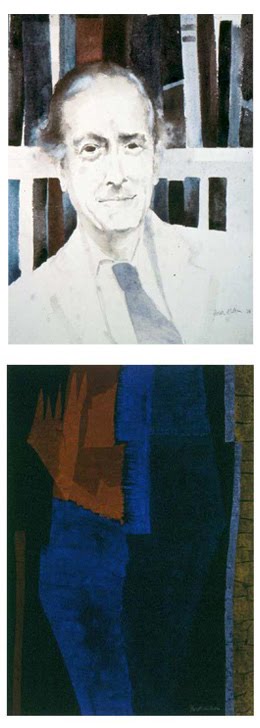















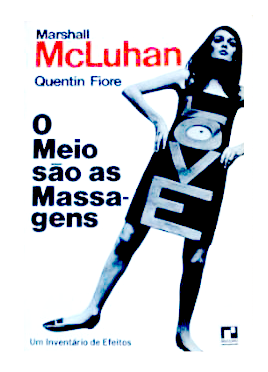





































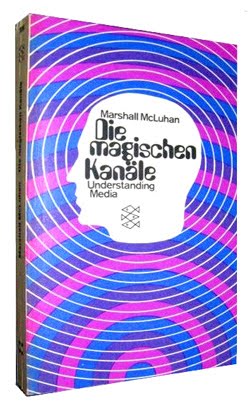
























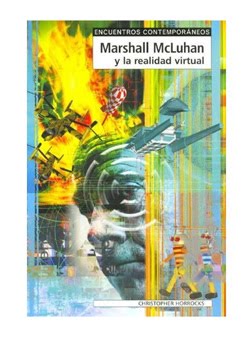




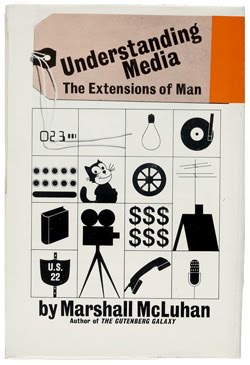


















































![Lucifer [from Latin] <br>meaning "light-bearer"](https://blogger.googleusercontent.com/img/b/R29vZ2xl/AVvXsEhq-2kZZOfh-Syv1Ewa0Ns2O6ZeP59pcsJp9ihhKcXCaovYZO_cKxffC5iSKOXFHr6E1jiHc6zedt1U6I95831RgpVdm3qk8-9C3y1yPyrCiQe4jgx-DsbeHnjKnw9t6Qx3ZM5TSYxiPj5H/s1600-r/lucifer.png)


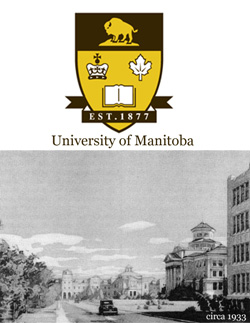










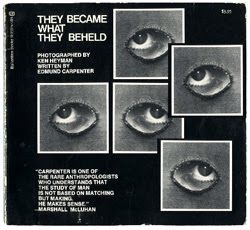























































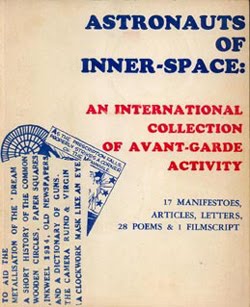












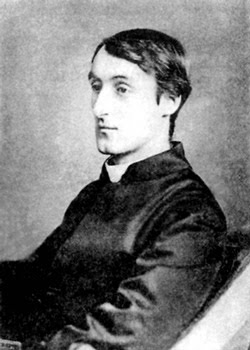


















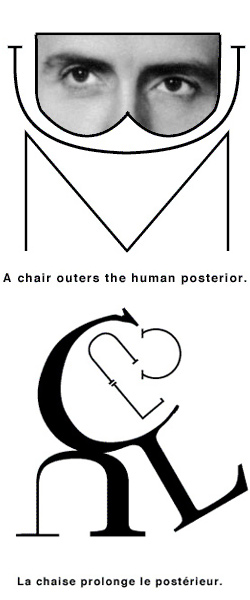






















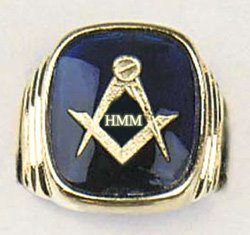















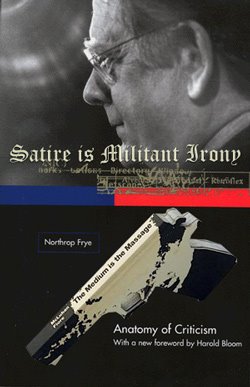
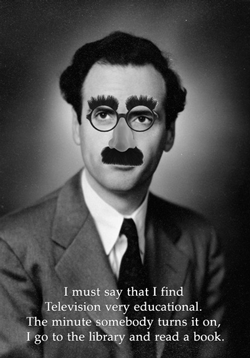






















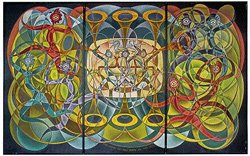










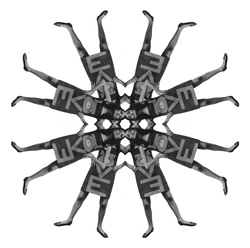



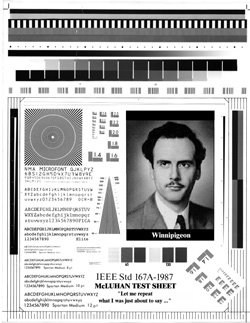

2 comments:
In contradistinction to visual space is acoustic space, which McLuhan later subdivided into pre-Euclidean and post-Euclidean forms. Pre-Euclidean acoustic space predates the rise of phonetic literacy and is described as "the natural space of nature-in-the-raw inhabited by non-literate people" (McLuhan & Powers, 1989, p. 45). It is within an emphasis on this preliterate configuration that the concept of acoustic space first appears in McLuhan's work. Introduced to McLuhan through a colleague, Carl Williams, at the University of Toronto (Theall, 2001, p. 145), it first appeared in the mid-1950s in an article titled "Acoustic Space" written by Edmund Carpenter and Marshall McLuhan (1960), published in the short-lived journal Explorations and later included in the 1960 Explorations anthology. The definition of acoustic space in this early article eventually became the baseline articulation of the concept.
Auditory space has no point of favored focus. It's a sphere without fixed boundaries, space made by the thing itself, not space containing the thing. It is not pictorial space, boxed in, but dynamic, always in flux, creating its own dimensions moment by moment. It has no fixed boundaries; it is indifferent to background. (p. 67)
In contrast to the static, container-like qualities of visual space, acoustic space comes across as an organic concept, dynamic and contingent in character. With acoustic space there is no empty void to be filled, but rather a space created in the mutual relations between elements as they develop over time. McLuhan explained the idea in a letter to literary critic Harold Rosenberg in 1965 by using an analogy: "Central heating structures the thermal space of a room visually. That is, a centrally heated room has a thermal space that is uniform, discontinuous, and connected. That is visuality as such" (Molinaro, McLuhan, & Toye, 1987, p. 318). McLuhan's analogy suggests that acoustic space might be like that generated by a portable electric space heater. These devices are useful to eliminate drafts largely because they can be used to structure thermal space acoustically: creating [their] own dimensions moment by moment ... [without] fixed boundaries ...[and] indifferent to background. In other words, the portable electric space heater changes the spatial qualities of a room by virtue of its location in the room.
The electric space heater may be of some significance insofar as McLuhan believed it was electricity that ushered in the return of acoustic space with the development of the Morse telegraph in the mid-nineteenth century, disrupting the centre-margin patterns long established by typography. McLuhan claimed this to be the case because "electricity has all the properties of the acoustic world: it is simultaneous and everywhere at once" (McLuhan & Powers, 1989, p. 138). On this point, McLuhan disputed Innis' claim to the contrary (McLuhan, 1964a) and proclaimed electricity as the force behind a new era of post-Euclidean acoustic space, making obsolete the visual space created by mechanical typographic technology. McLuhan emphasized the effects of the electric revolution in the arts, science, and philosophy of the early twentieth century as this new acoustic mode of awareness seeped into Western culture. For instance, he suggested that the appearance of Cubism was a clear indication of the return of acoustic sensibilities. He tells us in Laws of Media that "Cubism ('multi-locationalism') is one of the painterly forms of acoustic space." Why is this so? Because, he says, "paralleling [the atonal music of Shoenberg], Cubist painting abandons single fixed points of view along with Euclidean geometry and perspective" (McLuhan & McLuhan, 1988, p. 55). McLuhan also considered modern data networks as a form of acoustic space, observing that modern telecommunications demonstrate acoustic properties: they have the intrinsic nature of a sphere, simultaneously resonating and structured around multiple and interconnected centres, relatively indifferent to background (McLuhan & Powers, 1981; McLuhan & Powers, 1989, p. 140).
From its initial appearance in Explorations to its more complex fusion as both method and message in the tetrad, spatial metaphor provides crucial insight into the organization and maturation of McLuhan's thought. In fact, the development of visual and acoustic space in McLuhan's work provides an example of how metaphors can actively shape cognitive processes, leading to new insights and suggesting new avenues of inquiry.
Post a Comment